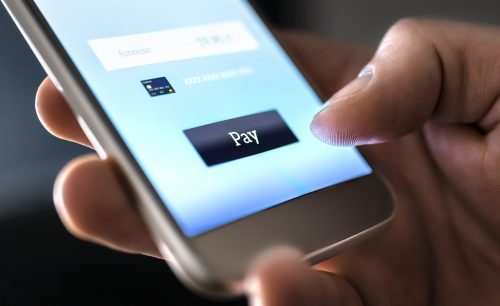
Technological advancements and innovations have greatly influenced the modern world. These innovations have seeped into different sectors, including banking and businesses, and hence many companies are facing out traditional payment solutions and replacing them with a cashless payment system. Customers don’t have to carry cash, checkbooks, or plastic cards to make payments with the modernized system.
While this technology has been in use for some time, its demand has been fueled by the COVID-19 pandemic. At the pandemic’s beginning, employees were asked to work from home. It meant that payments that had to be made physically were delayed until the staff resumed the office or the company made different arrangements. Other than that, part of the protocol to control the spread of covid was to minimize contact. It necessitated a contactless system, where money isn’t handled physically.
Therefore, while the economy is opening up again, businesses modernize their payment solutions to fit the new market needs. Here’s how they do it:
-
By Using Codes To Authorize Payment
As mentioned before, even credit cards are quickly being replaced by advanced technology known as virtual cards. As the name suggests, a virtual card business is a form of payment that only exists online. The card is usually loaded with money in advance to purchase goods and services.
Although virtual, the card works just like the Europa, Mastercard, and Visa cards (EMV) technology. A virtual card carries the same information as the EMV technology. That’s the address, credit card number, security code, expiration date, and Code Verification Value (CVV code).
However, these two types of cards differ in how they work. Instead of swiping, like it’s done for EMV technology, to use a virtual card, you have to copy and paste the virtual card information, which is known as a code. Once you have pasted the code, the transaction is authorized for processing. The card is designed to ensure the security of transactions by generating a new code every time the payment is initiated. Therefore, besides being fast and contactless, virtual card technology also offers more protection for online transactions.
-
By Using Blockchain Technology
Initially, blockchain technology was founded to provide a platform to trade cryptocurrencies such as bitcoin without needing an intermediary such as a bank. However, innovations have enabled the use of blockchain for many things.
Most existing blockchain-based payments are using bitcoins to pay for goods and services. In turn, the business can use the bitcoins to either trade or convert them into their local currency.
Blockchain technology has also enabled small businesses to expand their operations to international customers. The customer pays in bitcoins, and the business owner converts the bitcoin into their local currency instead of converting currencies using banks.
Since all these processes don’t need an intermediary, paying becomes fast and affordable, favoring the business’s operation. Other blockchain modes of payment that are coming up include a smart contract that enhances security and transparency between transacting parties.
-
By Using Biometrics
When both parties of a transaction are evaluating a mode of payment, their most significant concern is usually security. A sound payment system should protect its users against fraud and theft risks. On the other hand, modern technology and automation are highly exposed to cybersecurity issues. Therefore, once you have adopted any of the listed ways of modernizing the payment system of your business, you need to think about boosting its security. That’s where biometrics comes in.
Biometrics uses biological features such as heartbeat analysis, facial recognition, fingerprint scanners, vein mapping, and iris recognition to verify a process, in this case, payment.
A transaction can only be authorized by the owner of the card or application when using biometrics, therefore enhancing security while still ensuring accuracy and efficiency of payment.
-
By Using Mobile Point of Sales
Mobile Point of Sale or mPOS is a payment system that converts a smartphone or tablet into a cash register so that the business owner can accept cash virtually in any location. This technology has come in handy for businesses that wish to be in motion. As such, food vendors can now supply their service in concerts, festivals, and even in food trucks without worrying about t handling physical cash, which is exposed to risks such as theft. All you have to do is have a device and internet connection, and you’re set to streamline your payment process.
Although this technology is yet to be popular, research done by Juniper Research shows that transactions done through mPOS are expected to reach an all-time high of 87 billion by 2023. According to the study, by 2023, 1 out of 4 points of sale transactions (POS) will be through mPOS.
Conclusion
The modern payment gateway has evolved over the years. Businesses nowadays have a wide variety of options from which to choose. Payment processing can be overwhelming at first glance. However, you don’t necessarily have to stick with something old-fashioned like a merchant account. Modernizing your payment solutions is not only possible but highly beneficial both for your business and your customers if you find the correct implementation.
Interesting Related Article: “How do online payments work?“

